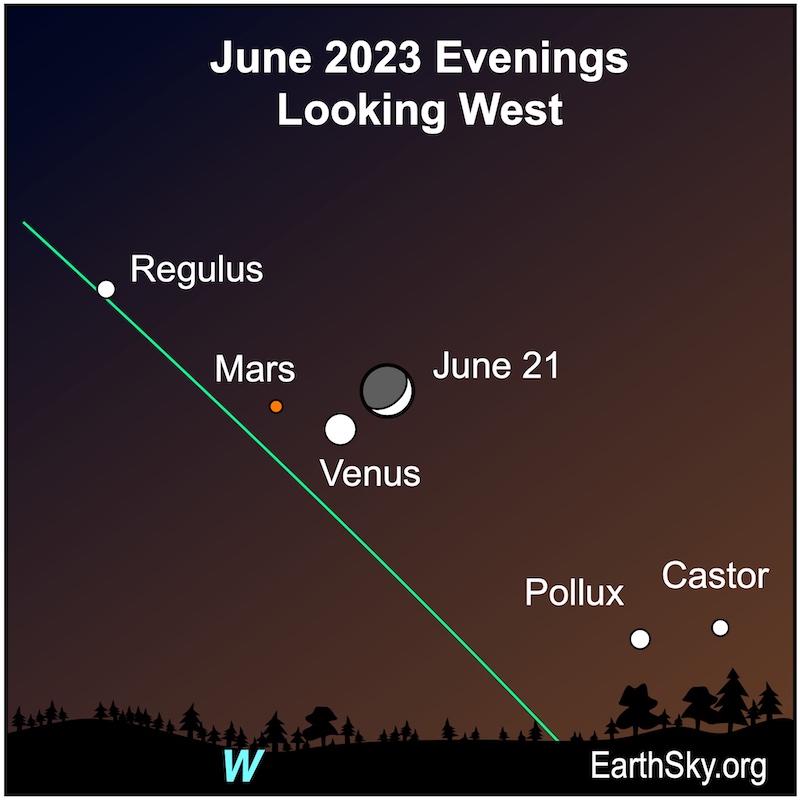Solstice sky highlights the moon and 2 planets
The solstice will arrive at 14:58 UTC (9:58 a.m. CDT) on June 21, 2023. June’s solstice brings the first day of summer to the Northern Hemisphere and the first day of winter to the Southern Hemisphere. As you wait through one of the longest days of the year in the north for the sky to darken, you’ll first spot the crescent moon, followed by the bright light of Venus. Once the sky is a bit darker, you’ll finally spot the last member of this cosmic trio, reddish Mars.
You may also recognize some bright stars nearby. First look toward the northwestern horizon to spot Pollux and Castor in Gemini the Twins before they set. Then, in the opposite direction (higher and to the southeast), you can spot Regulus in Leo the Lion.
Star chart for the June solstice

Our charts are mostly set for the northern half of Earth. To see a precise view from your location, try Stellarium Online. If you’re in the Southern Hemisphere on the June solstice, this lineup will tilt the opposite direction, from lower left to upper right. You can still look for Castor and Pollux low near the northwestern horizon, followed by the moon, Venus, Mars and finally Regulus.
If you get a great photo of this solstice sky, send it to us! Submit your photo to EarthSky Community Photos.
Bottom line: On the June solstice, look west to spot a crescent moon near brilliant Venus and the dimmer, reddish Mars. This cosmic trio is a treat in our solstice sky.
For more videos of great night sky events, visit EarthSky’s YouTube page.
The post Solstice sky features cosmic trio of moon, Venus and Mars first appeared on EarthSky.
0 Commentaires